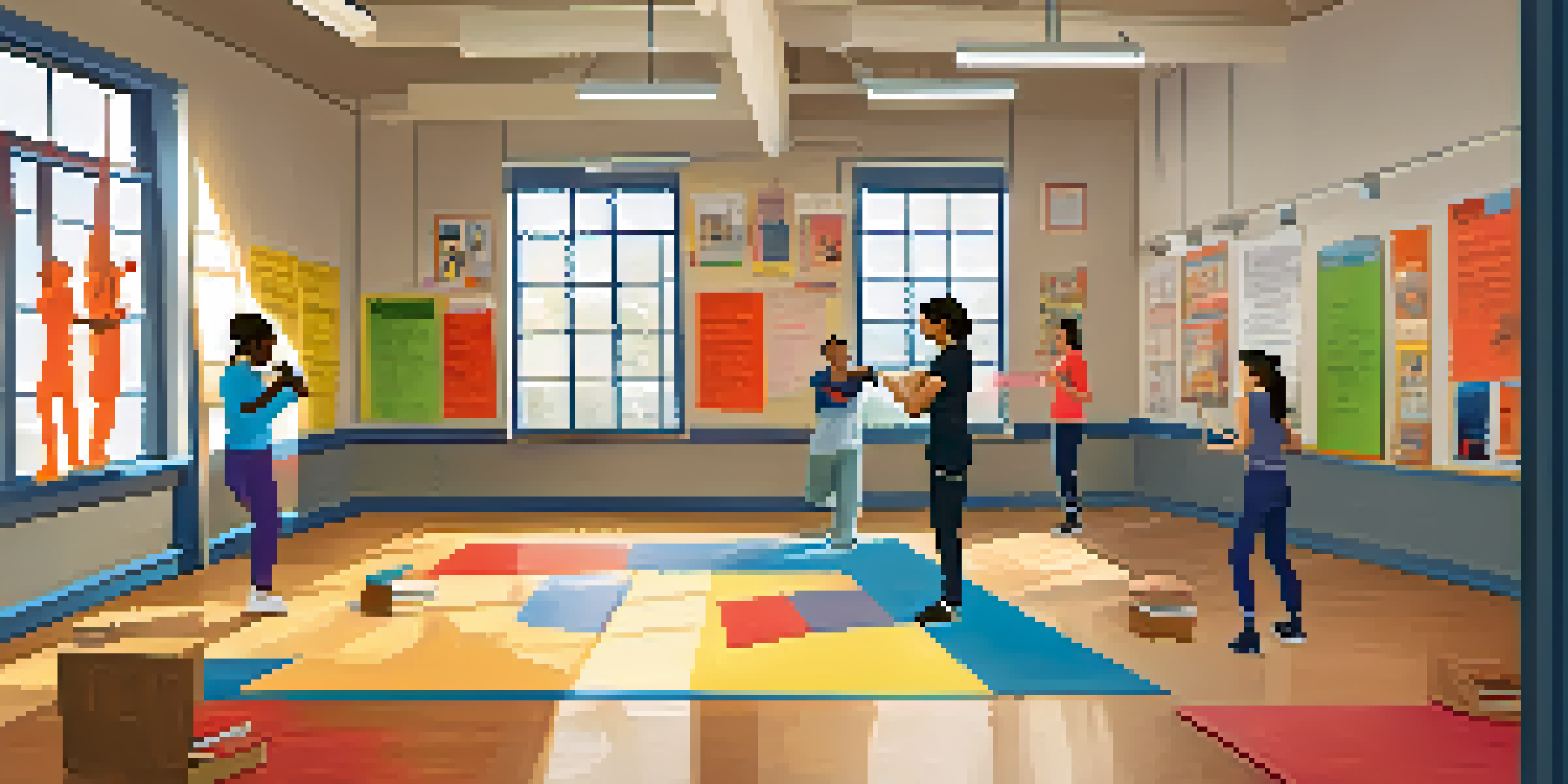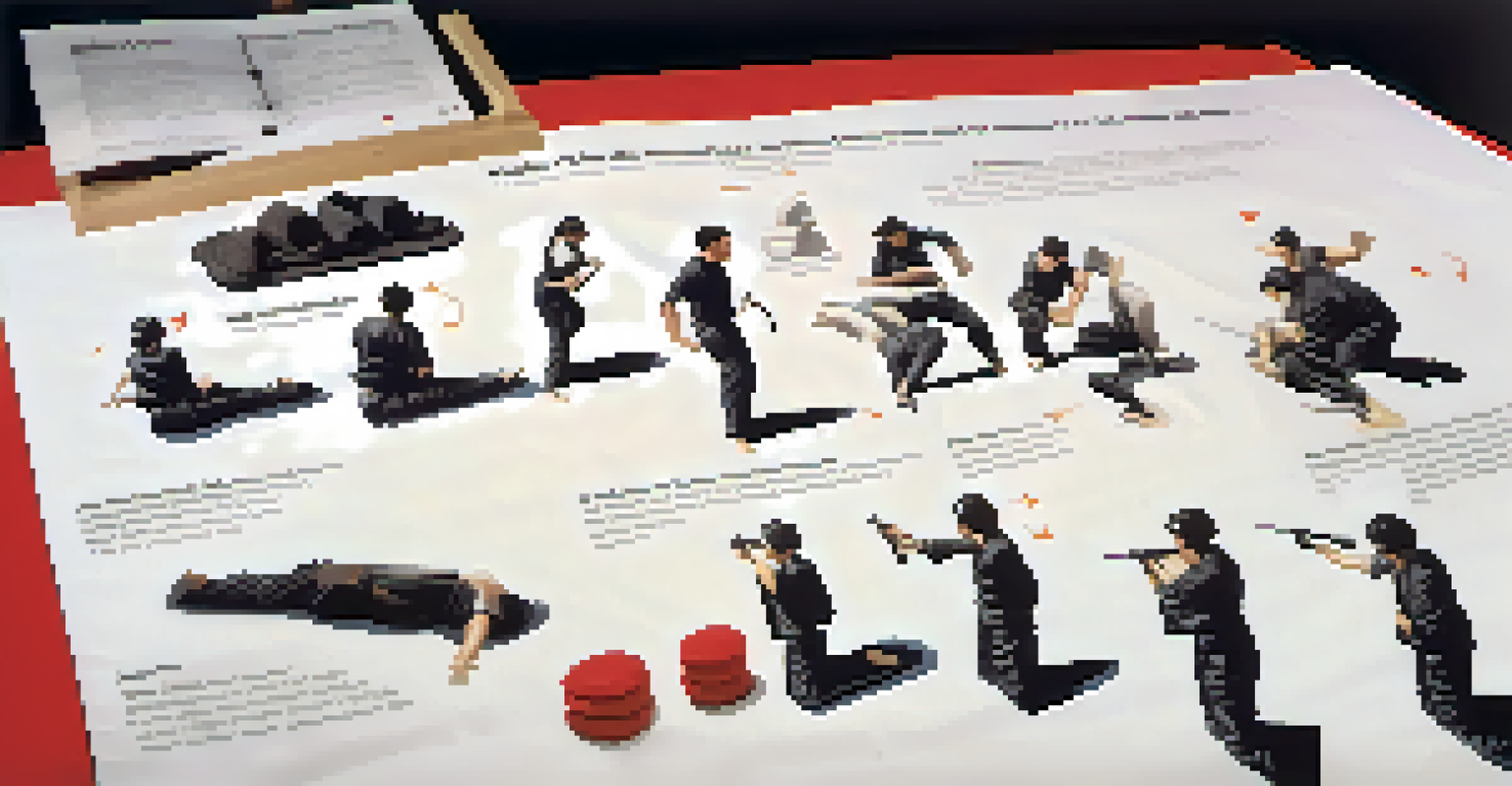Visual Aids in Self Defense Training for Autism

Understanding Autism and Its Impact on Learning
Autism Spectrum Disorder (ASD) affects how individuals perceive and interact with the world. Many individuals with autism may struggle with social cues, communication, and sensory processing, making traditional learning methods less effective. Understanding these challenges is crucial for tailoring self-defense training to meet their needs.
Visual aids are the most effective tools in teaching, making complex information understandable and accessible.
Visual aids can bridge the gap in communication and understanding by providing clear, concrete representations of concepts. For example, using visual diagrams can help explain self-defense techniques in a step-by-step format. This not only caters to visual learners but also reinforces memory through imagery.
By creating a supportive and accommodating training environment, instructors can foster confidence and skill development in individuals with autism. The right approach can empower them to feel more secure and capable in potentially threatening situations.
The Role of Visual Aids in Self-Defense Techniques
Visual aids, such as picture cards and videos, can effectively demonstrate various self-defense techniques. For instance, a series of images showing the steps of a specific maneuver can break down complex actions into manageable parts. This method allows learners to absorb information at their own pace and revisit material as needed.

Additionally, using color-coded charts or infographic-style guides can help individuals quickly identify the appropriate responses to different scenarios. When learners can visualize the outcomes of their actions, they are more likely to remember and execute the techniques under stress.
Visual Aids Enhance Learning for Autism
Using visual aids effectively tailors self-defense training to meet the unique learning needs of individuals with autism.
Ultimately, visual aids transform abstract concepts into tangible skills, making it easier for individuals with autism to internalize self-defense strategies. This clarity can lead to greater retention and application in real-life situations.
Creating Effective Visual Aids for Training
When developing visual aids, simplicity is key. Use clear images and straightforward language that avoids jargon, ensuring the aids are accessible to all learners. For example, instead of complex terms, use simple phrases like 'Get away' or 'Call for help' to convey important actions.
The best way to predict the future is to create it. Empowering individuals through training can lead to transformative outcomes.
Incorporating relatable scenarios into visual aids can also enhance understanding. By depicting common situations that might require self-defense, learners can better relate to the material and visualize themselves responding effectively. This approach not only makes training relevant but also reinforces crucial decision-making skills.
Moreover, feedback from individuals with autism during the creation process can help ensure that the aids resonate with their experiences and learning styles. Involving them in this way promotes ownership and engagement, leading to a more impactful training experience.
Incorporating Technology into Visual Aids
Technology offers exciting possibilities for enhancing visual aids in self-defense training. Apps and interactive tools can provide dynamic demonstrations and real-time feedback, making learning more engaging. For example, instructional videos that feature real-life scenarios can illustrate techniques in action.
Virtual reality (VR) is another innovative option, allowing individuals to practice self-defense in simulated environments. This immersive experience can help learners gain confidence and muscle memory without the pressure of a real confrontation. It also provides a safe space to make mistakes and learn from them.
Technology Boosts Training Engagement
Incorporating technology, like apps and virtual reality, creates dynamic and immersive learning experiences for self-defense skills.
By leveraging technology, trainers can create a multi-sensory learning experience that caters to various learning preferences. This approach not only keeps participants engaged but also empowers them to practice skills in a controlled yet realistic setting.
Building Confidence Through Repetition and Visual Reinforcement
Repetition is a powerful tool in any learning process, especially for individuals with autism. Incorporating visual aids that reinforce techniques through repeated exposure can solidify understanding. For instance, regularly reviewing visual cues during practice sessions can help learners internalize the actions needed in self-defense scenarios.
Visual reinforcement can also provide a sense of accomplishment. As individuals master techniques, they can visually track their progress, which boosts confidence and motivation. Celebrating small successes, like executing a move correctly, can lead to greater self-assurance over time.
When learners see their improvement through visual aids, it encourages a growth mindset. This positive reinforcement helps build resilience and a belief that they can handle challenging situations effectively.
Adapting Visual Aids for Different Learning Styles
Every individual has unique learning preferences, and visual aids can be tailored to accommodate these differences. Some learners may prefer diagrams, while others might respond better to videos or hands-on demonstrations. Understanding these preferences can enhance the overall effectiveness of self-defense training.
Incorporating a variety of visual aids ensures that all participants can engage with the material in a way that resonates with them. For instance, combining visual stories with physical practice allows learners to connect concepts to real-world situations, making the training feel more relevant.
Repetition Builds Confidence and Skills
Regular practice with visual aids reinforces techniques, helping individuals with autism gain confidence and improve their self-defense abilities.
By adapting visual aids to different learning styles, instructors can create a more inclusive environment. This flexibility not only improves comprehension but also fosters a sense of belonging among participants.
The Long-Term Benefits of Visual Aids in Self-Defense Training
The use of visual aids in self-defense training can have lasting benefits beyond immediate skill acquisition. As individuals with autism develop confidence and competence in self-defense, they may experience improved social skills and increased independence. These outcomes can enhance their overall quality of life.
Moreover, effective training that integrates visual aids can empower individuals to advocate for themselves. Understanding self-defense strategies helps them navigate their environment with greater awareness and assertiveness, reducing anxiety in unfamiliar situations.

Ultimately, the goal of self-defense training is not only to teach techniques but also to foster personal growth. By utilizing visual aids, trainers can create an enriching experience that equips individuals with the skills and confidence they need to thrive.